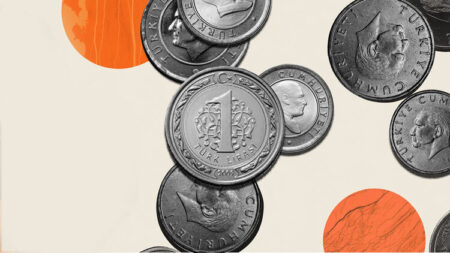- Gold steadies after setting a fresh all-time high near $3,871 on Tuesday.
- US shutdown fears rise after White House talks fail to reach a deal.
- US data failed to boost the Greenback, as weaker Consumer Sentiment offset a modest uptick in Job Openings.
Gold (XAU/USD) trims earlier losses on Tuesday, trading around $3,847 at the time of writing. The metal is regaining ground after dipping toward the $3,800 mark earlier in the day, recovering from a sharp intraday pullback from a fresh all-time high near $3,871, as buyers stepped back in following softer US Consumer Confidence data and a muted reaction to the latest JOLTS Job Openings report.
Despite the sharp intraday drop, Bullion’s near-term floor appears firm, supported by investor demand for safe havens amid the growing risk of a United States (US) government shutdown, should lawmakers fail to strike a funding deal before Tuesday at midnight. At the same time, ongoing geopolitical frictions continue to underpin Gold’s appeal as a go-to safe-haven asset, while renewed US tariffs stir concerns over global trade, reinforcing demand for the yellow metal as a hedge against uncertainty.
Moreover, investors are increasingly pricing in higher odds of further Federal Reserve (Fed) interest rate cuts, which lowers the opportunity cost of holding non-yielding Bullion. Against this backdrop of risk aversion and expectations for easier monetary policy, the broader outlook for Gold remains constructive, even as the market digests the latest round of profit-taking.
Market movers: Risk sentiment cautious amid US shutdown, global tensions
- US data offered limited support to the Dollar, as the Conference Board’s Consumer Confidence Index fell to 94.2 in September from a revised 97.8 in August, while JOLTS Job Openings for August rose slightly to 7.23 million from 7.21 million in July, broadly matching expectations
- US shutdown fears grow as a White House meeting on Tuesday between President Donald Trump and congressional leaders ended without any breakthrough, leaving the government on track for a potential shutdown from Wednesday unless lawmakers strike a last minute deal. Following the meeting, Vice President JD Vance warned the government is “headed to a shutdown”, accusing Democrats of holding the government “hostage” over their spending demands and urging them to agree to a deal without conditions.
- The looming shutdown threatens to disrupt key US economic data releases, with the Bureau of Labor Statistics (BLS) confirming on Monday that it would suspend operations and not release economic data during a government shutdown. This means the Nonfarm Payrolls (NFP) report, due Friday, will not be released if the shutdown proceeds. The shutdown could also delay the monthly Consumer Price Index (CPI) report scheduled for October 15, complicating the Fed’s efforts to assess the inflation and labor market outlook, and potentially weighing on the broader economy if the shutdown extends.
- President Donald Trump announced new tariffs late Monday, imposing a 10% duty on softwood lumber and raising levies to 25% on kitchen cabinets, bathroom vanities, and certain upholstered furniture, effective October 14. The administration invoked Section 232 on national security grounds, warning that rates could rise further in January if no new trade agreements are reached.
- Geopolitical tensions remain heightened as the war in Ukraine escalates, with Russia launching its largest autumn conscription since 2016, calling up 135,000 soldiers, while continuing heavy drone and missile strikes on Ukrainian cities. At the same time, US President Donald Trump met with Israeli Prime Minister Benjamin Netanyahu on Monday, where they jointly unveiled a 20-point peace proposal for Gaza, calling for a ceasefire, disarmament, and the establishment of a “Board of Peace” overseen by an international transitional authority.
- Fed Vice Chair Philip Jefferson said on Tuesday that the US labor market is softening and could face stress if not supported, though he emphasized the Fed does not need to see further weakening in jobs at this stage. He projected economic growth to hover near 1.5% for the rest of the year and expects disinflation to resume after this year. Jefferson described the recent rate cut as bringing policy closer to the neutral rate, which he called a “valuable concept,” but one that requires embracing uncertainty and moving deliberately. He added that the Fed stands ready to use all its tools to fulfill its mandate.
Technical analysis: XAU/USD stabilizes near $3,800 after sharp pullback from record high
XAU/USD stabilizes above the $3,800 psychological mark, a key level that aligns with the 21-period Simple Moving Average (SMA) on the 4-hour chart, where buyers are stepping in after the metal’s sharp pullback from its fresh all-time high near $3,871.
The near-term bias is constructive as long as $3,800 holds, with a rebound from this zone likely to pave the way for another push toward the recent peak near $3,871. It could potentially open the door for a move toward the $3,900 handle if bullish momentum revives.
However, a decisive break below $3,800 would tilt the short-term bias lower and risk dragging prices back into the previous consolidation range with strong support at the $3,700 base, which is reinforced by the 100-period SMA.
The Relative Strength Index (RSI) has eased to around 58 after retreating from overbought territory, suggesting that a pullback was due following the steep rally to fresh record highs. The cooling in momentum indicates that the market could shift into a consolidation phase, while the Average Directional Index (ADX) near 31 suggests the prevailing uptrend still has underlying strength.
Gold FAQs
Gold has played a key role in human’s history as it has been widely used as a store of value and medium of exchange. Currently, apart from its shine and usage for jewelry, the precious metal is widely seen as a safe-haven asset, meaning that it is considered a good investment during turbulent times. Gold is also widely seen as a hedge against inflation and against depreciating currencies as it doesn’t rely on any specific issuer or government.
Central banks are the biggest Gold holders. In their aim to support their currencies in turbulent times, central banks tend to diversify their reserves and buy Gold to improve the perceived strength of the economy and the currency. High Gold reserves can be a source of trust for a country’s solvency. Central banks added 1,136 tonnes of Gold worth around $70 billion to their reserves in 2022, according to data from the World Gold Council. This is the highest yearly purchase since records began. Central banks from emerging economies such as China, India and Turkey are quickly increasing their Gold reserves.
Gold has an inverse correlation with the US Dollar and US Treasuries, which are both major reserve and safe-haven assets. When the Dollar depreciates, Gold tends to rise, enabling investors and central banks to diversify their assets in turbulent times. Gold is also inversely correlated with risk assets. A rally in the stock market tends to weaken Gold price, while sell-offs in riskier markets tend to favor the precious metal.
The price can move due to a wide range of factors. Geopolitical instability or fears of a deep recession can quickly make Gold price escalate due to its safe-haven status. As a yield-less asset, Gold tends to rise with lower interest rates, while higher cost of money usually weighs down on the yellow metal. Still, most moves depend on how the US Dollar (USD) behaves as the asset is priced in dollars (XAU/USD). A strong Dollar tends to keep the price of Gold controlled, whereas a weaker Dollar is likely to push Gold prices up.
Read the full article here















